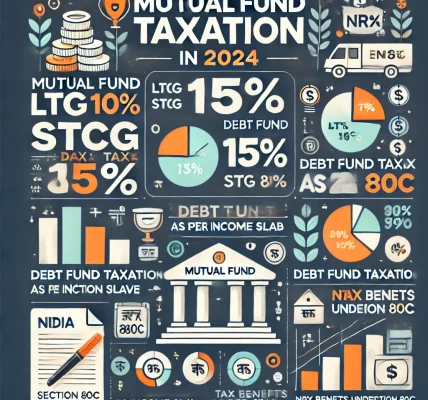Introduction
Mutual funds offer investors diverse opportunities, and among them, sectoral and thematic mutual funds are gaining popularity. These funds focus on specific industries or investment themes, aiming for higher returns by capitalizing on sector-specific growth trends. However, they also come with unique risks that investors must understand before investing.
In this article, we will explore what sectoral and thematic mutual funds are, their advantages and disadvantages, and the risks associated with them.
What are Sectoral and Thematic Mutual Funds?
Sectoral and thematic mutual funds are equity-oriented funds that invest in specific sectors or themes. Though they sound similar, there are key differences:
- Sectoral Funds: These funds focus on a particular industry or sector, such as technology, banking, healthcare, or energy. Example: A Banking Mutual Fund invests only in banking and financial companies.
- Thematic Funds: These funds invest based on a broader investment theme, cutting across multiple sectors. Example: A Green Energy Fund may invest in companies from power, automobile, and infrastructure sectors that align with the renewable energy theme.
Both funds have the potential for high returns but also come with increased risks due to their concentrated investment approach.
Pros of Investing in Sectoral and Thematic Mutual Funds
1. Potential for High Returns
Since these funds invest in fast-growing sectors or themes, they can deliver higher returns compared to diversified equity funds. If a particular industry is booming, investors can benefit from its upward growth trajectory.
2. Targeted Investment Opportunities
Investors who have a strong belief in the future growth of a sector (e.g., IT, Pharma) or theme (e.g., ESG investing, Digital India) can use these funds to maximize potential profits.
3. Portfolio Diversification Within a Niche
Although these funds focus on a specific sector or theme, they still offer some level of diversification within that category. For example, a technology fund might invest in software, hardware, and cloud computing companies.
4. Active Fund Management
Sectoral and thematic funds are actively managed by fund managers who make strategic stock selections within their focus area, leveraging expertise and research insights.
Cons of Investing in Sectoral and Thematic Mutual Funds
1. High Risk Due to Limited Diversification
Unlike diversified equity funds, these funds are heavily concentrated in a single sector or theme, making them highly vulnerable to downturns in that space. If the chosen sector underperforms, returns can decline significantly.
2. Market Timing is Crucial
These funds perform well only when the sector or theme is in an uptrend. Investors must accurately time their entry and exit, which can be challenging.
3. Cyclical Nature of Sectors
Many industries go through economic cycles. For example:
- Banking and finance perform well in a growing economy but struggle in downturns.
- IT thrives during a tech boom but slows down during regulatory changes or demand saturation.
4. Higher Volatility
Compared to broad-based diversified mutual funds, sectoral and thematic funds experience higher volatility, leading to larger price swings.
5. Longer Investment Horizon Required
Since these funds are highly sector-specific, they may take a longer time to generate returns, requiring patience from investors.
Risks Associated with Sectoral and Thematic Funds
1. Concentration Risk
Since investments are focused on a single sector or theme, any negative developments (like government regulations or technological disruptions) can significantly impact returns.
2. Regulatory Risk
Certain sectors, such as pharmaceuticals, telecom, and banking, are subject to regulatory changes that can impact stock performance overnight.
3. Liquidity Risk
If a particular sector or theme loses investor interest, selling fund units may become difficult, affecting liquidity.
4. Performance Risk
The success of these funds depends on the sector’s growth potential. If the sector underperforms or the theme loses momentum, investors may experience negative or low returns.
5. Global Factors and Economic Downturns
Sectors like IT, energy, and banking are heavily impacted by global economic conditions. A slowdown in the global economy or an increase in interest rates can negatively impact these funds.
Who Should Invest in Sectoral and Thematic Funds?
These funds are best suited for investors who:
- Have high risk tolerance and can withstand market volatility.
- Possess strong knowledge of the chosen sector/theme and can track industry trends.
- Are willing to invest for the long term (5+ years) to navigate market cycles.
- Already have a diversified portfolio and want to allocate a small percentage to high-risk, high-reward funds.
How to Choose the Right Sectoral or Thematic Mutual Fund?
- Research the Sector/Theme: Understand the industry’s growth potential and risks before investing.
- Analyze Fund Performance: Check past returns, expense ratio, and consistency in performance.
- Assess Fund Manager’s Expertise: The experience and strategy of the fund manager play a key role in delivering returns.
- Compare Expense Ratios: Higher expense ratios can eat into your profits.
- Evaluate Market Trends: Invest when the sector/theme is in a growth phase rather than at its peak.
Conclusion
Sectoral and thematic mutual funds provide an exciting investment opportunity but come with higher risks and volatility. They should be considered only by investors with deep market understanding, high-risk tolerance, and a long-term investment horizon.
For best results, investors should allocate only a small portion of their portfolio to these funds and ensure the rest of their investments are well-diversified. Consulting a financial advisor can help in making an informed decision.
Happy Investing!




